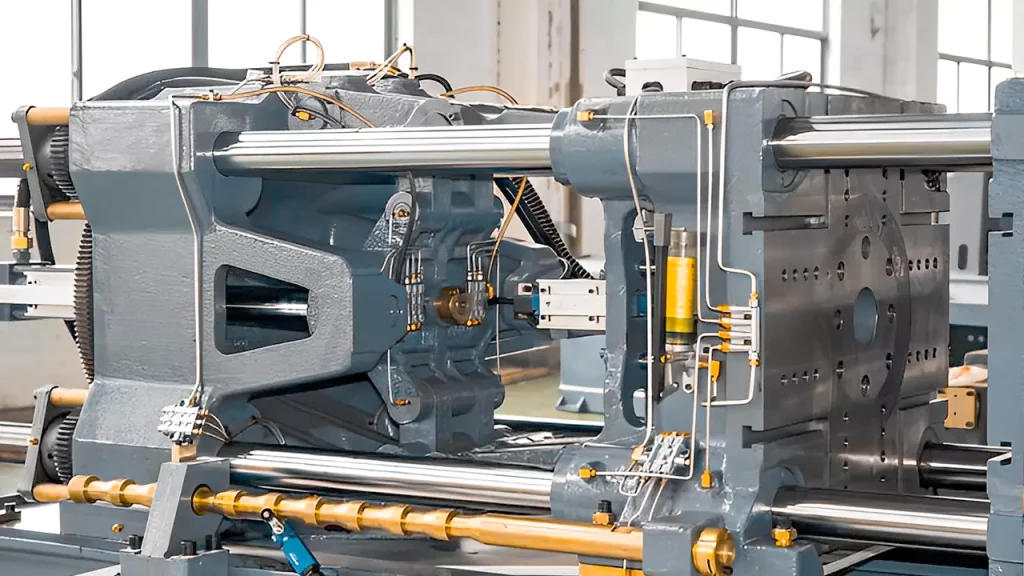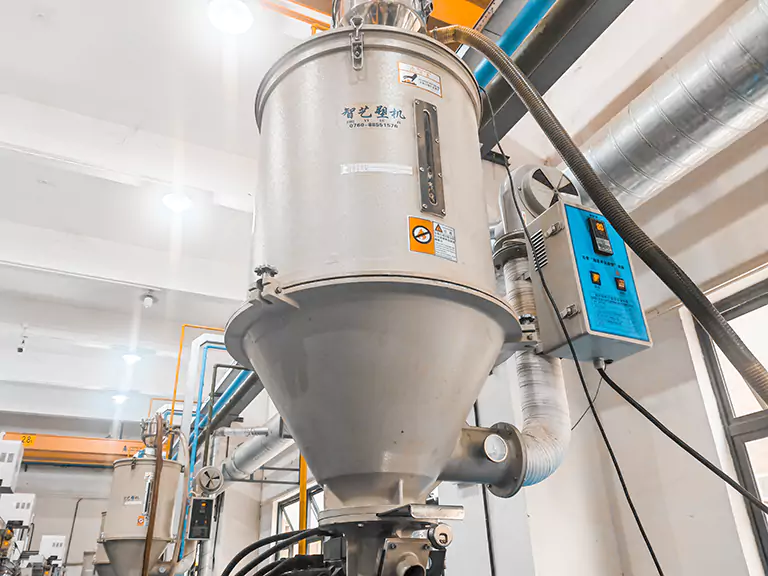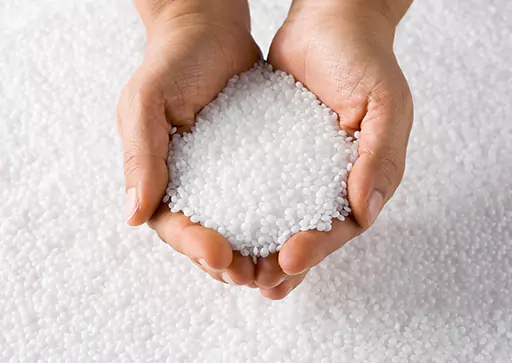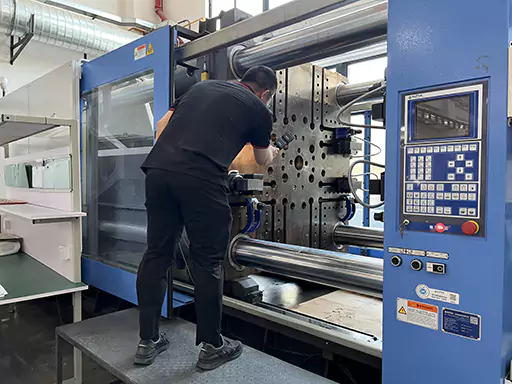En plastics injection molding, the work done to prepare the mold before adding material to it and molding plastic to make a product is of critical importance. It includes evaluating and setting up for a wide variety of processes, such as material processing performance inspection (determination of plastic fluidity, moisture content, etc.); dyeing and granulating of raw materials before processing; preheating and drying of granules; cleaning and preheating of inserts; mold testing and cylinder cleaning, etc.; and so on.
Having a sound comprehension of all the procedures involved and commencing with the appropriate strategy to evaluate and prepare the material is crucial for ensuring the effectiveness of the plastic injection molding process. Now, in the event you are not familiar with the steps that take place before utilizing high-tech machinery, inserting molds, and starting the production form, let’s explore various aspects of preparing the production setup before commencing the production process.
Let’s get into the specifics without further ado, shall we?

The Material Preparation Before Plastics Injection Molding Process
Preparing the material injected into the plastic to be molded into a product is essential to plastics injection molding. You may not be able to construct the ideal result based on the type of material you use to create the final product if the material that will be used is not correctly prepared after the mold has been set.
Before commencing the process of plastics injection molding, the following are some considerations to make about the preparation of the material:
To begin, you need to be aware that after the mold has been set, some processing of the materials that have been purchased is required before injection molding can begin. The most crucial step in this process is drying the plastic to prepare it for injection molding, which involves removing moisture and reducing humidity in the components.
Drying in plastics injection molding
It’s important to dry the plastics because they include water, which, if it is not evaporated, might harm the quality of the end product if it is not dried.
It is necessary to completely dry various polymers, including polycarbonate, polycarbonate, PBT, PET, ABS, acrylic, and polyurethane. They are referred to collectively as hygroscopic resins, and hygroscopic substances are compounds that readily absorb or adsorb water from their environment. Hygroscopic resins can do this.
Suppose these materials are employed, and the water is not removed from the material before it is injected. In that case, the polymer will lessen the strength of the product created during the injection process. Dehumidification is a process that we perform on these materials before we utilize them to ensure that they do not have any trace of moisture. At the same time, they are being used for injection.
In contrast, hygroscopic plastics need to be dried with a desiccant dryer, which uses compressed air and a desiccant material that draws water from the resin. Non-hygroscopic resins, which do not absorb water and include polyolefin, polystyrene, and PVC, can simply have the water removed by a heated ambient airflow.
Why is it Important to Dry the Material Before Processing it?
The moisture level of the raw material needs to be dried to a particular percentage or below before the molding process can begin. This is because the moisture content of the raw material is too high, which can cause steaming and additional flaws such as peeling, peeling, and brittleness. When the material that contains moisture is introduced into the cavity, ecchymoses that resemble silver begin to develop on the surface of the workpiece. The water decomposes at high temperatures, further deteriorating the material. The material must first be prepared for the material to keep the appropriate amount of moisture after being formed.

How To Check The Material for its Preparation?
Before molding, the appearance and the qualities of the raw materials should be inspected, and this should be done with consideration for the characteristics of the plastic and the conditions of the feeding. If the granular plastic that is being used is polyvinyl chloride, for example, it needs to be compounded and dry-mixed; if the product has coloring requirements, a sufficient amount of colorant or masterbatch can be added; the pellets that are given frequently have varying degrees of moisture.
Fluxes and other volatile low molecular weight compounds, particularly those with a propensity to absorb moisture, almost invariably exceed the limitations permitted during material processing. As a result, it is essential to perform a drying treatment before processing and evaluating the amount of water in the product.
In order to fulfill the requirement that water-sensitive polycarbonates dried at high temperatures must have a moisture content of 0.2 percent or less or even 0.03% to 0.05%, the materials are commonly dried in an oven that uses a vacuum. The dried plastic must be carefully packed and stored to avoid the plastic absorbing moisture from the air and losing its drying action. This can be accomplished by using an airtight container.

Because of this, the hopper in the drying chamber can continually provide the hot material to the injection molding machine. This simplifies the operation, maintains cleanliness, and improves product quality. The injection rate should be increased because it is beneficial. The amount of material utilized per hour by the injection molding machine is often used to determine the loading amount of the drying hopper. The water pollution and drying treatment precautions are increased by 2.5 times.
Additional Things to Consider Before Beginning the Injection Molding:
Tidy Up the Space:
Ensure that the area around the equipment is clean, and prohibit storing any items that are not directly related to production.
Clean the Equipment:
Wipe off the workbench in addition to the interior and outside of the equipment. Use thecClean cotton sand to wipe the injection guide, and clamp the tie rod.

Analyzing Equipment Condition:
Determine whether the equipment’s control switches, buttons, electrical circuits, operating handles, and handwheels are broken or malfunctioning. The switches and handles are recommended to be in the “off” position.
Checking the Safety Devices:
Determine whether the various safety protection devices built into the apparatus’s different components are in good working order and can be relied upon. Check to see whether the “Emergency Stop” test is valid and reliable, whether the safety door slides easily, and whether or not the limit switch may be activated while the machine is switching.
Setting Safety Devices:
The safety protection devices on the equipment (such as mechanical lock levers, stop plates, and various safety protection switches, etc.) are not permitted to move casually, nor are they permitted to be modified or purposefully rendered useless. This rule applies to all of the safety protection devices on the equipment.
Screw Analysis:
Determine if the screws on each component have been properly tightened and loosened. When parts are found to be abnormal or damaged, you should report them to the foreman, who should either handle the situation by himself or notify the maintenance personnel to handle it. If the foreman cannot handle the situation, the maintenance personnel should handle it.
Thorough Inspection:
Inspect each cooling water circuit and test the water flow to see whether the flow is smooth, blocked, or leaking.
Make Sure There Aren’t Any Unidentified Objects Cluttering Up the Hopper:
No items must be stacked on top of the hopper. It is important to keep dust and debris from getting into the hopper. Therefore, make sure you have sealed the cover well.
Importance of Preparing for Plastics Injection Molding Beforehand:
Preparing before the plastic injection molding starts is crucial for several reasons:
- Control de calidad: Preparing helps ensure that the final product is high quality. The injection molding process requires precision and accuracy, so any flaws or errors in the preparation stage can significantly impact the final product.
- Cost-Effective: Preparing helps identify potential issues or problems that could arise during the injection molding process. Addressing these issues early on can help prevent delays, rework, or even the need to scrap an entire batch of products, saving a lot of time and money.
- Seguridad: Preparing also helps ensure the injection molding process is safe for the workers involved. This can involve checking the equipment, identifying potential hazards, and mitigating any risks.
- Eficacia: Preparing also helps to improve the efficiency of the injection molding process. The team can work more quickly and effectively by having all the necessary materials, tools, and equipment ready before starting the process.
Resumiendo:
Overall, preparing before the plastics injection molding starts is essential in ensuring a successful outcome. It helps to minimize risks, increase efficiency, and produce high-quality products that meet the desired specifications.










